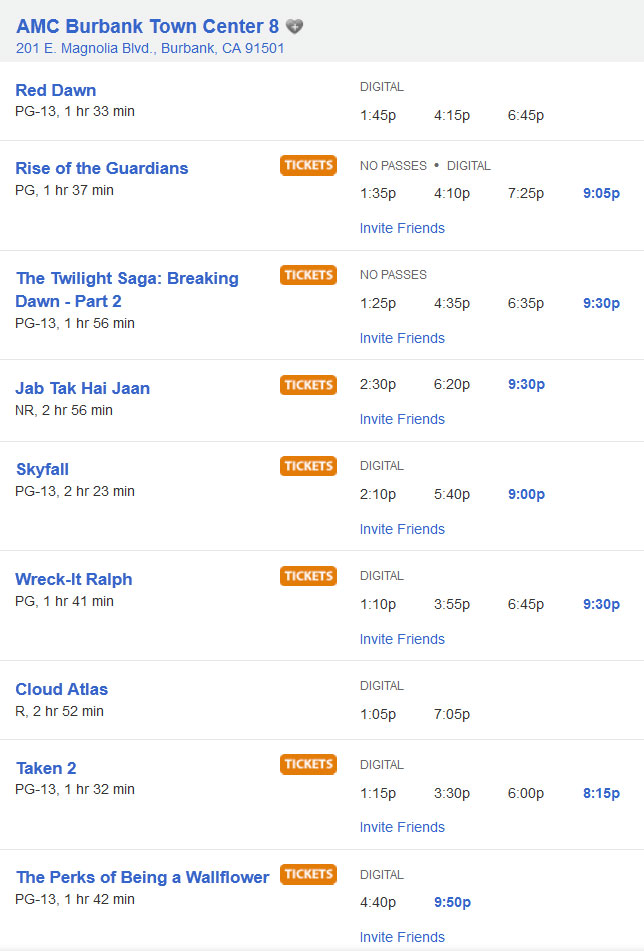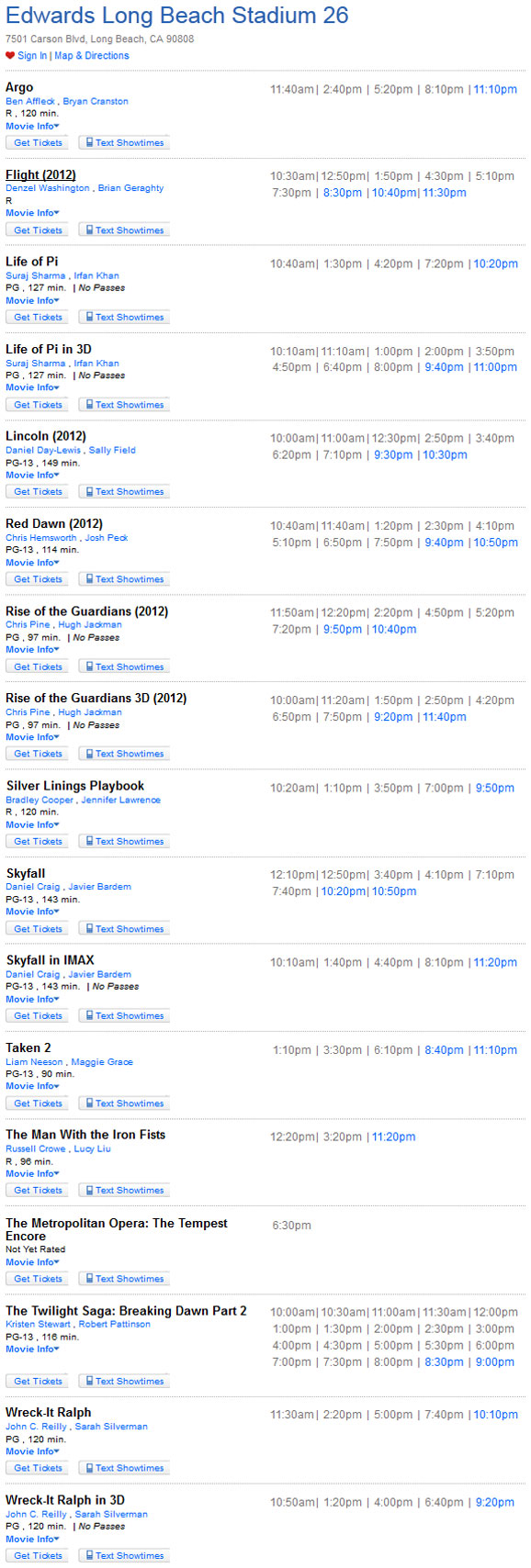- Create a schedule that shows the most movies you could see in one day.
- What is a guess for the number of movies you could see in one day that is too low?
- What is a guess for the number of movies you could see in one day that is too high?
- What information would be useful in figuring this out?
- How can you tell when a movie would end?
- What happens in a movie theater before/after a movie plays?
This is a great opportunity to have students demonstrate Math Practice 3 – Construct viable arguments and critique the reasoning of others. Students will not likely realize that all answers will be four, and they can explain how they came up with their schedules.
If you want to ensure a variety of answers, then I recommend Option 4. It is from a large theater and there are movies starting every hour.
You may have to modify the situation slightly to take into account that third and fourth graders cannot see a PG-13 or R rated movie.
Also, I don’t have a problem with students bending the rules of the scenario slightly as long as they can justify themselves. For example, they could reason that the first 10 minutes after a movie’s showtime are just previews so they could come in late and still see the complete movie.
You can find other examples of theater schedules on websites such as Yahoo! Movies, Moviefone, and Fandango.
- Movie schedule (Option 1):

- Movie schedule (Option 2):

- Movie schedule (Option 3):

- Movie schedule (Option 4 – Challenge):

- CCSS 3.MD.1 Tell and write time to the nearest minute and measure time intervals in minutes. Solve word problems involving addition and subtraction of time intervals in minutes, e.g., by representing the problem on a number line diagram.
- CCSS 4.MD.2 Use the four operations to solve word problems involving distances, intervals of time, liquid volumes, masses of objects, and money, including problems involving simple fractions or decimals, and problems that require expressing measurements given in a larger unit in terms of a smaller unit. Represent measurement quantities using diagrams such as number line diagrams that feature a measurement scale.



Hi I am currently enrolled in the graduate program at Mt. Holyoke and taking a class with Mike Flynn. He presented an opportunity to have us facilitate a PBL assignment/lesson to our students. Since my students are completing our time unit, i feel this will be a great way for me to access their level of understanding. As i am planning, i wanted to ask you if i should give them a time frame. For example, 12-6 timefram
Hi Shay. That seems to be a reasonable thing to do if you want to narrow the scope of their possibilities. Clearly that makes more of a difference with more challenging movie schedules. Good luck. Mike is great.
I watch 2-3 movies in a week, I like it very much!